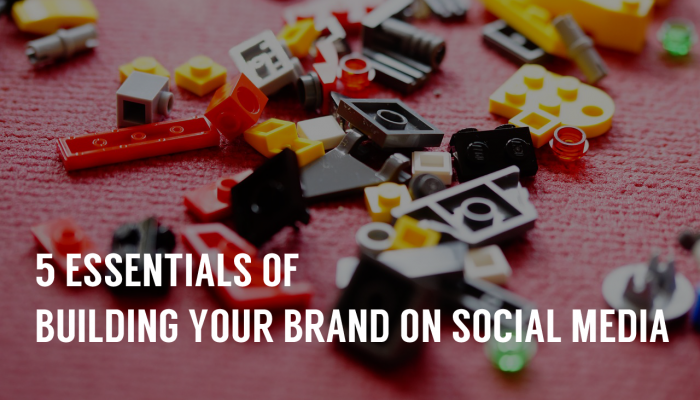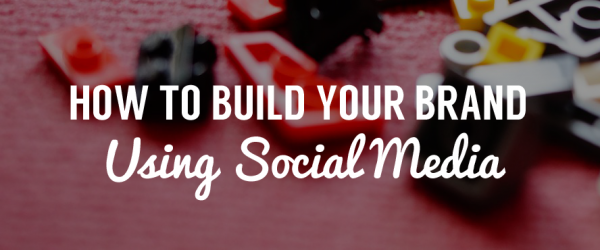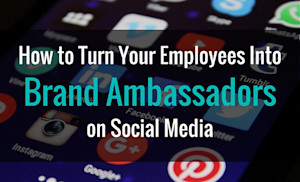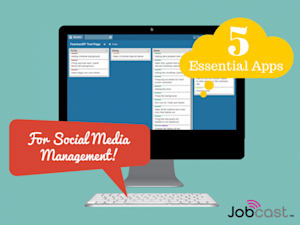
The 5 Essentials of Building Your Brand on Social Media
Whether you want to hire new talent, sell products, or grow your audience…
You need to focus on your brand because none of these things is possible if no one knows who you are!
Your ability to generate any of these results is based on your brand.
In an era where the average person spends so much of their time online, the best ways to build that brand is through social media.
This is why 78% of companies now have a dedicated social media team and why 76% of companies choose social media to communicate their employer brand.
Although the use of social media branding is ubiquitous successful social media branding is not.
Many people still struggle with using social media.
I get emails and calls every day from people who have been tasked with growing their organization’s employer brand on social, but don’t know where to start.
If you’re feeling overwhelmed by social media or want to expand your knowledge, then this list is for you!

1. Choose the Right Social Networks.
There are hundreds (possibly thousands?) of social networks out there. Trying to create a thriving brand presence on all of them would be exhausting, expensive, and ridiculous!
Yes, social media is a great tool for branding, but the majority of social networks are not worth your time.
Instead of trying to broadcast your message to as many networks as possible, find the platforms that align with your brand and are frequented by the audience you want to reach.
Here are a few things to consider when making this choice:
LinkedIn is a great place to build credibility. It’s worth having a company page on LinkedIn just to show job seekers and potential partners (investors) that you have one. Whether you make use of any of the networks social capabilities should depend on your desired audience and how they use LinkedIn.
Facebook is still the best platform for promoting brand awareness. The network has over 1 billion users and makes sense for most brands because of its diverse user base.
Instagram and Pinterest are both excellent choices for companies with highly visual brands. Instagram tends to work a little better for brands targeting a younger demographic and Pinterest is best for brands looking to grow their popularity amongst women.
Twitter is awesome for having a conversation with your audience. The network is best used in combination with Facebook and/or blogging as you can use it to promote the longer form content that you share there.
2. Share Valuable Content.
You can’t build your brand without engagement.
Creating content that your audience thinks is valuable will make them want to share, comment, and like.
This is the key to growing your brand, not witty calls to action or flashy logos.
Here are a few things to consider when crafting content for social sharing:
Tailor your content to the social network. Twitter demands short, snappy copy whereas Facebook user tend to prefer longer more detailed posts… And remember, you can’t share to Pinterest without an image!
Everything you share on social media must reflect your brand. For example, emojis are fun, but if you use them in your employer branding, don’t be surprised to see your candidates use them in job applications!
Use visual content as much as possible. Content with engaging images gets 94 percent more views on average than that without. Facebook prioritizes posts with images and Twitter users are twice as likely to click on tweets that include a picture.
An excellent way to find content inspiration is to look at what your competitors are doing! Pay attention to what types of content they tend to focus on and what content is most successful for them.
I’m not advising you to steal their blog posts word for word, but if you notice that infographics work well for your competitors, then you may want to start posting some yourself.
3. Get Help
If you have a relatively unknown brand or are new to social media then you’re likely getting lost in the noise.
Being consistent with your content will eventually remedy this, but it will take a while.
You can speed things up by getting help from your team, your current audience, and, ideally, influencers in your industry.
Here are a few different ways to reach these influencers:
Mention influencers on Twitter and engage them in a conversation. You can also reference them in blog posts and then let them know so that they can Tweet about it.
Connect with them on LinkedIn and let them know why you think that they are worth connecting to and what you respect about their work.
Tag any influencers you’ve referenced when sharing content to your social media profiles.
Ask influencers if you can interview them for your blog or website.
Email influencers after you’ve published your content to let them know they’ve been referenced in your work.
It takes time to build up relationships with influencers in your field, but it’s the second best way to get your content shared to a large audience.
4. Spend a Little to Get a Lot
This is the best way to get your content shared to a large audience!
Social media used to be free(ish). This is no longer true.
Facebook and Twitter ads, especially if you carefully target those ads so that they reach people who want to hear what your brand has to say.
Always use your most valuable content for paid ads and tailor that content to the audience that you are targeting so that you get the best ROI for your ads.
5. Be Authentic
The word authenticity gets thrown around a lot my social media professionals.
But it is often used as more of a catchphrase than it is to provide people with real, actionable advice.
When I say be authentic I do not mean be yourself. What I mean is: Do not lie.
If your company is not young and hip, then don’t try to deceive people into thinking that it is.
If your product will not bring about world peace, then don’t say that it will (I’m looking at you CocaCola!)
You’ll get the best results by emphasizing the things that truly are amazing about your brand, not by trying to trick people.
Social media is one of the most powerful ways to reach people, but it’s also an easy way to alienate people if you don’t use it appropriately.
This is what makes having a robust social media strategy in place so important.
If you choose the right networks, share valuable content, reach out to influencers, advertise intelligently, and stay true to your brand then your hard work will pay off.
Sources:





